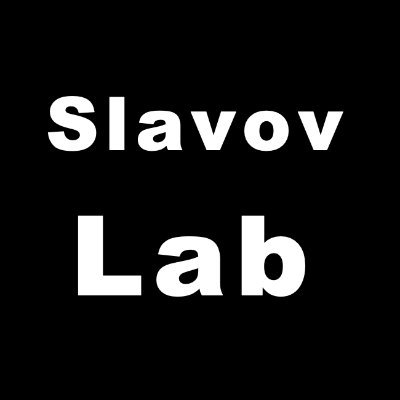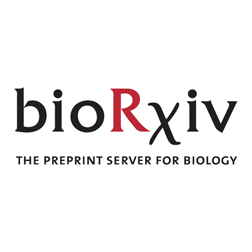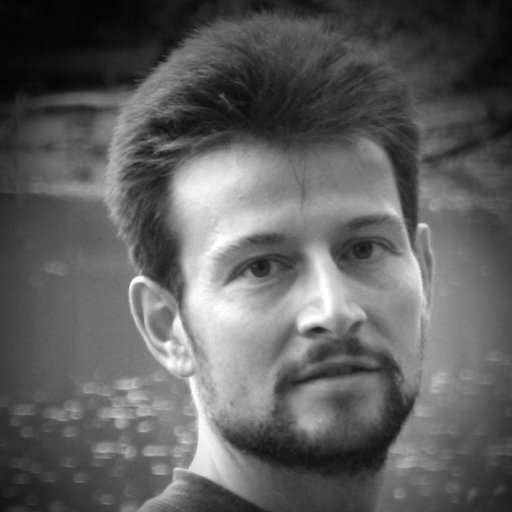
Slavov Laboratory
@slavovLab
Followers
3K
Following
505
Media
100
Statuses
488
We seek principles in the coordination among protein synthesis, metabolism, cell growth and differentiation PI: @slavov_n Videos: https://t.co/tfkuZB7tgw
Boston, MA
Joined July 2020
We report many proteins not predicted by the genetic code. They are stable & abundant O( 10³ ) copies / cell. Generative mechanisms include codon-anticodon mismatches & RNA modifications. Their abundance depends on codon frequency & protein stability. https://t.co/lAxvulC4zx
biorxiv.org
Amino acid substitutions may substantially alter protein stability and function, but the con-tribution of substitutions arising from alternate translation (deviations from the genetic code) is...
16
286
1K
This article is a homecoming for me. As a PhD student, I focused on the growth-rate transcriptional regulation in yeast. Now, ~ 20 years later, we report protein regulation scaling with the growth rates of single cells in mammalian tissues. https://t.co/qwDYA3v55b
biorxiv.org
Protein synthesis and clearance are major regulatory steps of gene expression, but their in vivo regulatory roles across the cells comprising complex tissues remains unexplored. Here, we systematic...
3
23
134
Proteasomes also play a major role in Alzheimer’s disease (AD). ⬛️ 20S proteasome abundance strongly declines in AD patients. => This decline parallels a reduction in 20S substrate proteins and leads to abnormal protein accumulation in AD. 👇 https://t.co/FnDWDIAtsJ
biorxiv.org
Alzheimer’s disease (AD) is a relentlessly progressive, fatal neurodegenerative disorder associated with widespread aberrant proteomic changes. The full extent of protein dysfunctions in AD and their...
1
3
13
mRNA-mRNA correlations across the single cells from a tissue are rarely interpreted. They differ from the corresponding protein-protein correlations? 𝐖𝐡𝐲 ❓ https://t.co/qwDYA3v55b 🧵
6
38
243
The regulation of nuclear-encoded mitochondrial proteins is fascinating. They are synthesized in a fully eukaryotic manner, with introns, splicing, and cytosolic ribosomes. Yet, their degradation is handed off to proteases that look and act bacterial. https://t.co/xADWMbAqU6
0
3
17
I take pride in our research, but I am most proud of our team. Helping Andrew grow into a brilliant researcher has been a delight.
@_JasonDerks @slavovLab Forever grateful to @slavovLab for providing me the opportunity to work on all these amazing project. Cant imagine where I would be if I hadnt come to northeastern and joined this lab
1
1
16
Protein clearance rates vary across proteins in inverse proportion to the average cell-type doubling rate. This explains the degree to which protein clearance (degradation) sets protein abundance. https://t.co/qwDYA3uxfD
0
3
15
Multiplexed DIA enabled multimodal proteomics of ~ 10³ single cells, including quant of protein synthesis & degradation rates. Our technologies can increase the multiplexing along different dimensions (mass, time) and thus scale up throughput further. 🔽
Protein abundance is regulated by many mechanisms. We quantified them across the single cells in a mammalian tissue: 1⃣ The results revealed simple rules ! 2⃣ They may alter how you interpret single-cell DNA(RNA)-sed data. ⚠️ See @_AndrewLeduc's 🧵 https://t.co/qwDYA3v55b
1
3
3
This work is the culmination of everything I have worked on since starting my PhD. 🧵
The big one is finally out!! In this paper, we set out to provide insight into the fundamental question; How do the individual cells from complex tissues regulate their proteomes? Brief summary of our findings 👇 https://t.co/4dRXpGJTGn
1
5
24
Protein abundance is regulated by many mechanisms. We quantified them across the single cells in a mammalian tissue: 1⃣ The results revealed simple rules ! 2⃣ They may alter how you interpret single-cell DNA(RNA)-sed data. ⚠️ See @_AndrewLeduc's 🧵 https://t.co/qwDYA3v55b
The big one is finally out!! In this paper, we set out to provide insight into the fundamental question; How do the individual cells from complex tissues regulate their proteomes? Brief summary of our findings 👇 https://t.co/4dRXpGJTGn
1
11
59
Our experimental design aimed for: - Direct measurements - Quantitative accuracy supporting confident modeling - Scalable multiplexing & generalizable approach approach
1
1
5
We quantified mRNA abundance, translation, protein abundance, protein degradation and cell growth across thousands of single cells from a mammalian tissue. The results revealed 𝐜𝐨𝐦𝐩𝐥𝐞𝐱 regulation & 𝐬𝐢𝐦𝐩𝐥𝐞 organizing principles: https://t.co/KbhYkJDKPt 🧵
2
27
130
Progress may be limited by our perception of what's possible. ⬛️ I share an example to encourage rethinking possibilities. Broader context: https://t.co/4j7Ika5Mqw
0
3
11
Metabolic networks support cancer cell survival, proliferation, and malignant progression. Reactive oxygen species can damage macromolecules and induce pro-survival signaling pathways. Metabolites can modify chromatin and thus influence transcription.
0
4
14
𝐓𝐨𝐝𝐚𝐲 𝐦𝐚𝐫𝐤𝐬 𝐨𝐮𝐫 𝟏𝟎𝐭𝐡 𝐚𝐧𝐧𝐢𝐯𝐞𝐫𝐬𝐚𝐫𝐲 🎉 A decade of pushing the boundaries in proteomics, systems biology, and data-driven discovery. 🔬 Thank you to our collaborators, alumni & supporters!
1
0
10
Omics data cannot be better than the analyzed samples. This addresses the most frequent questions that I get for single-cell proteomic analysis of primary tissues.
Single-cell proteomics is gaining momentum. It can analyze the proteomes of ~ 1,000 single cells / day, and we need to ensure high quality cell isolation and sample preparation: ⬛️ These approaches can help: https://t.co/WfgfzLZyH1
2
5
39
When we started this project - about 10 years ago - we had limited access to old equipment. Better equipment would have been helpful, but using older equipment changed the perception about the feasibility & accessibility of single-cell proteomics. https://t.co/cAKLET86Wd
0
4
34
The epitranscriptome formed by the growing number of modifications occurring within mRNA transcripts.
2
98
465
The fraction of cells in each phase should be proportional to the relative duration of the phase. We applied this model to cells growing at different growth rates, and .... https://t.co/tdUzVNHukW
https://t.co/F0DITGq0RZ
1
1
7





